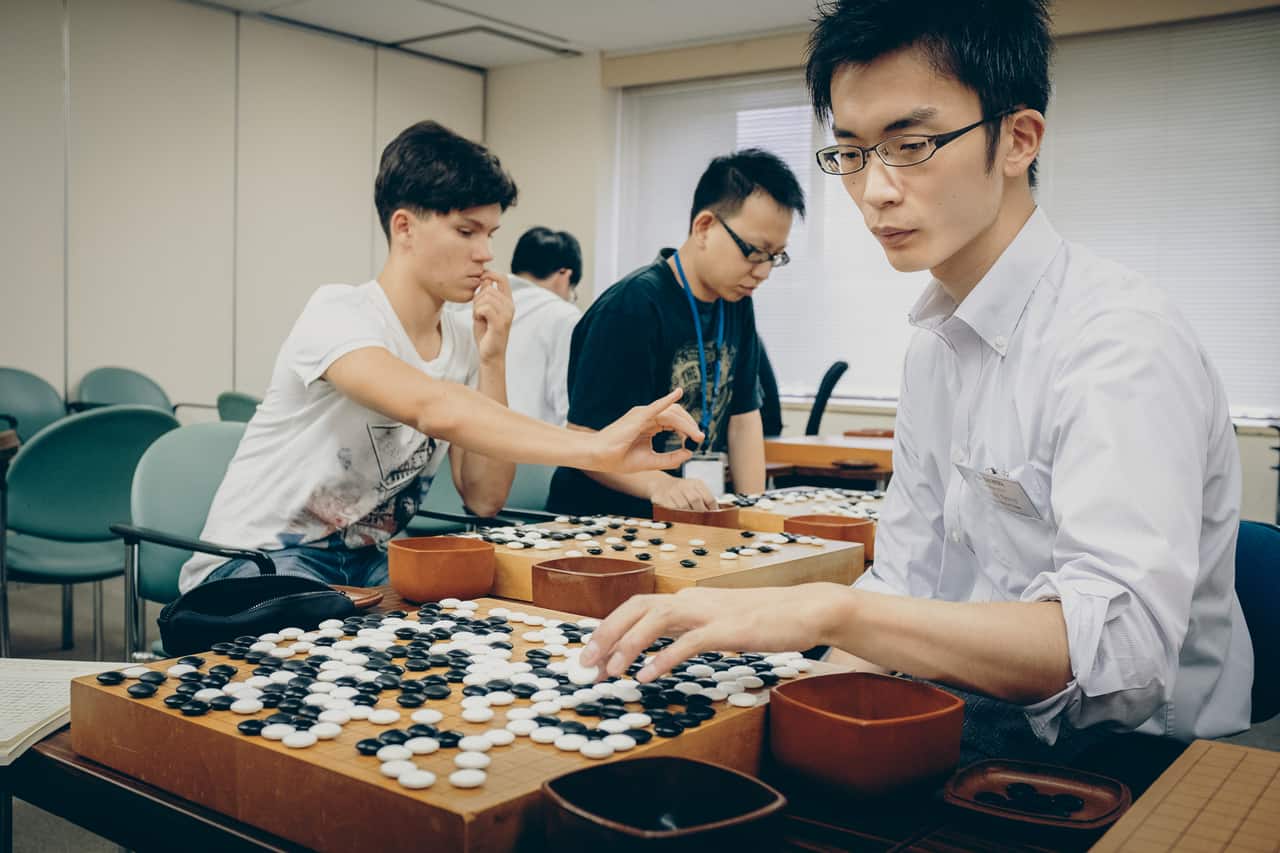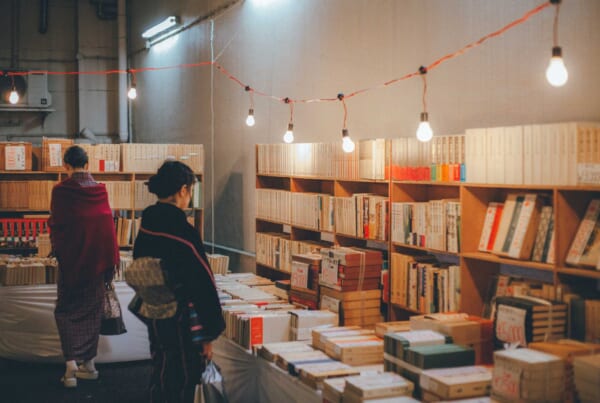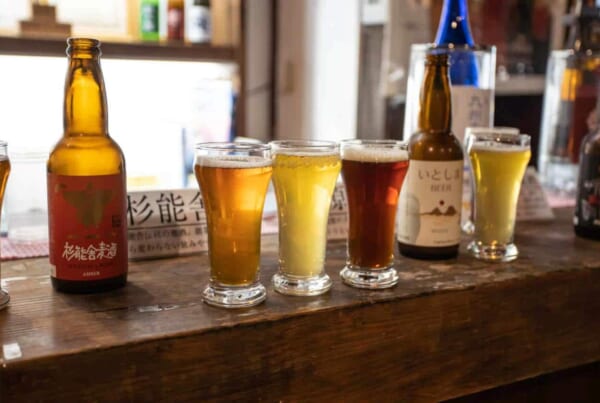Like chess is to the west, the game of Go is an Asian board game in which the players can develop extremely complex strategies. The game of Go played major importance in Japanese culture and history. Find out how Japanese craftsmen used their unique skills to create beautiful go boards and discover where to challenge Japanese Go players in Go salons in Japan.
- What is the game of Go?
- Craftwork: The game of Go combined with Japanese culture
- Where to play Go in Japan
- The Nihon Ki-in Summer Go Camp
- The Honinbo Shusaku Museum at Onomichi
- Useful informations
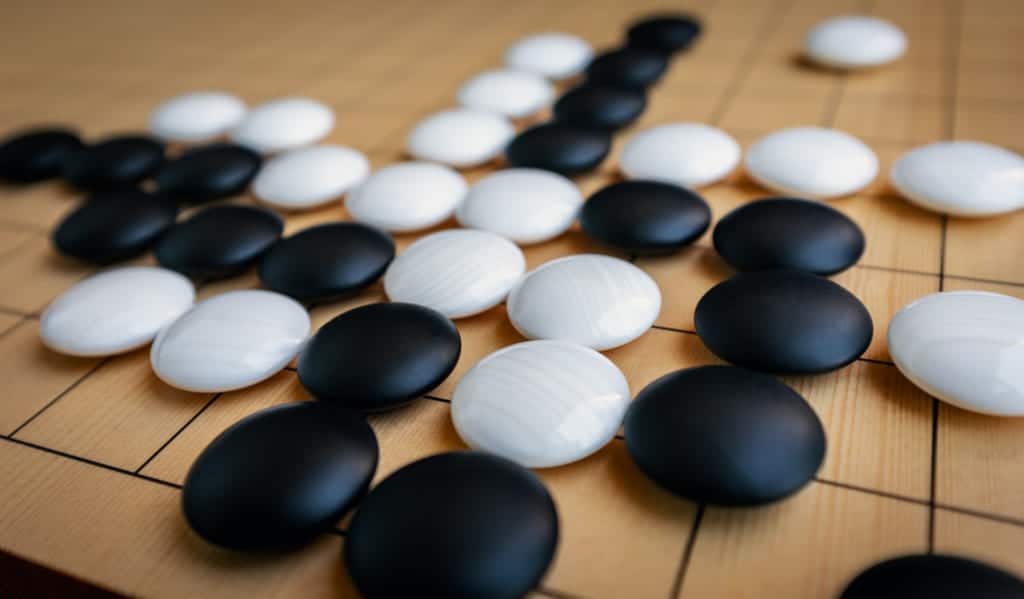
What is the game of Go?
The game of Go (囲碁) is a strategy board game invented in China thousands of years ago. Despite its surprisingly simple rules, the almost infinite possibilities brought by the few rules make this game so complex that mastering the game of Go has long been considered as an art, just like painting, music, and calligraphy.
Japan, along with China and Korea, is one of the three countries where the game of Go has been studied and held an important place in each country’s history. Samurais used the game of Go to learn military strategy, and professional Go leagues gradually appeared. Players who have spent their lives studying Go compete to win titles during competitions taking place in castles or temples. Today, however, the game of Go is not as popular among the Japanese as it was once. Young Japanese people, more attracted by western culture, prefer to play chess. But this 2,500-year-old game is still discussed in this modern era.
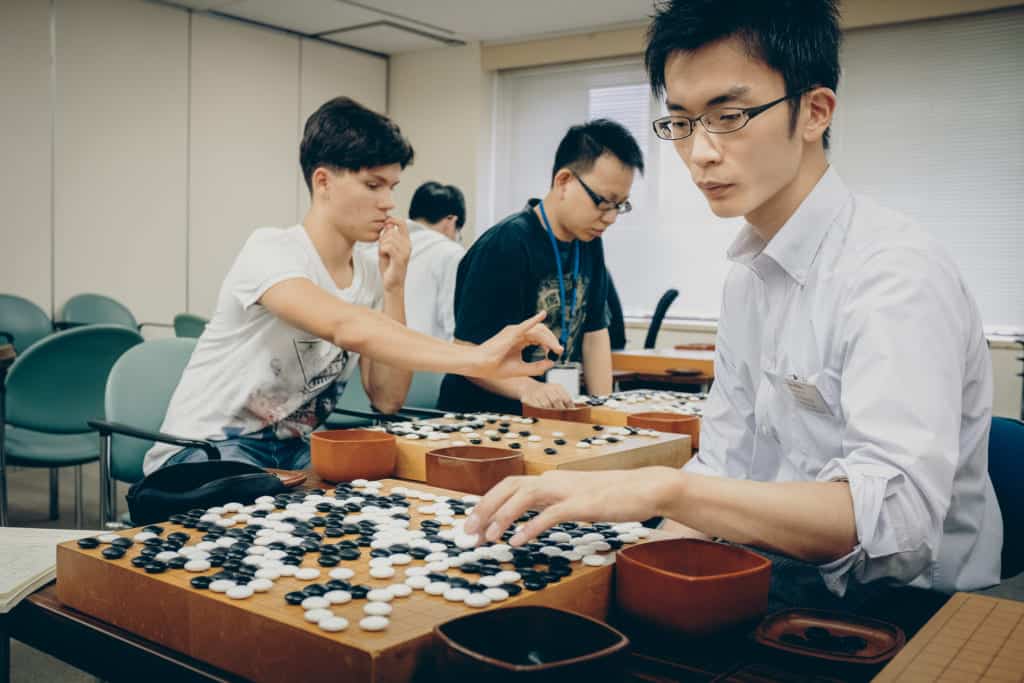
In the 2000s, the manga “Hikaru no Go” was published in the Weekly Shonen Jump. The story of a child haunted by the ghost of one of the greatest Go players of all time immediately became a hit. Adapted in anime and translated into many languages, the manga made the game of Go appealing again among young people around the world.
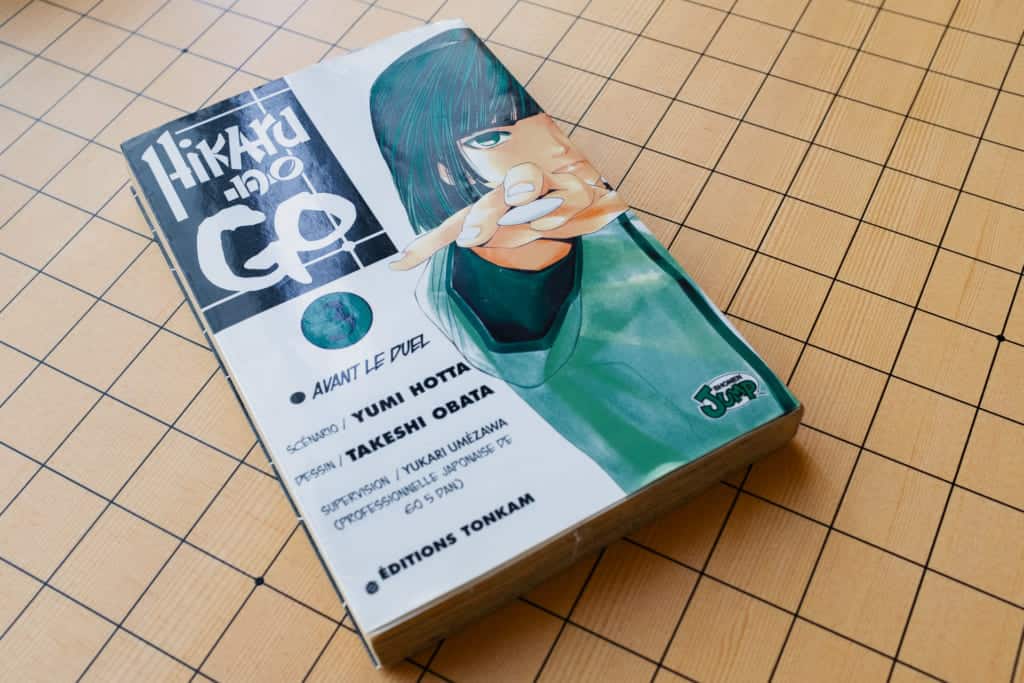
In 2016, a striking event with global repercussions brought the game of Go to the limelight. AlphaGo became the first computer program to beat a human professional Go player. This was a real turning point in artificial intelligence research. The number of possibilities in the game made this achievement impossible until that point. The developers had to program a kind of intuition to the AI in order to give it the possibility of finding the best moves. This revolution once again sparked the interest in the game of Go, in Japan and around the world.
Craftwork: The game of Go combined with Japanese culture
To play Go, you need a Go board, called goban, black and white stones, and bowls to store the stones. The style of these games can change depending on the countries. In Japan, Go games are minimalist, transcending the beauty of the raw materials in a very Japanese way. The Go games made in Japan can reach incredibly high prices, depending on the materials. It has become the standard of high-end Go games all around the world.
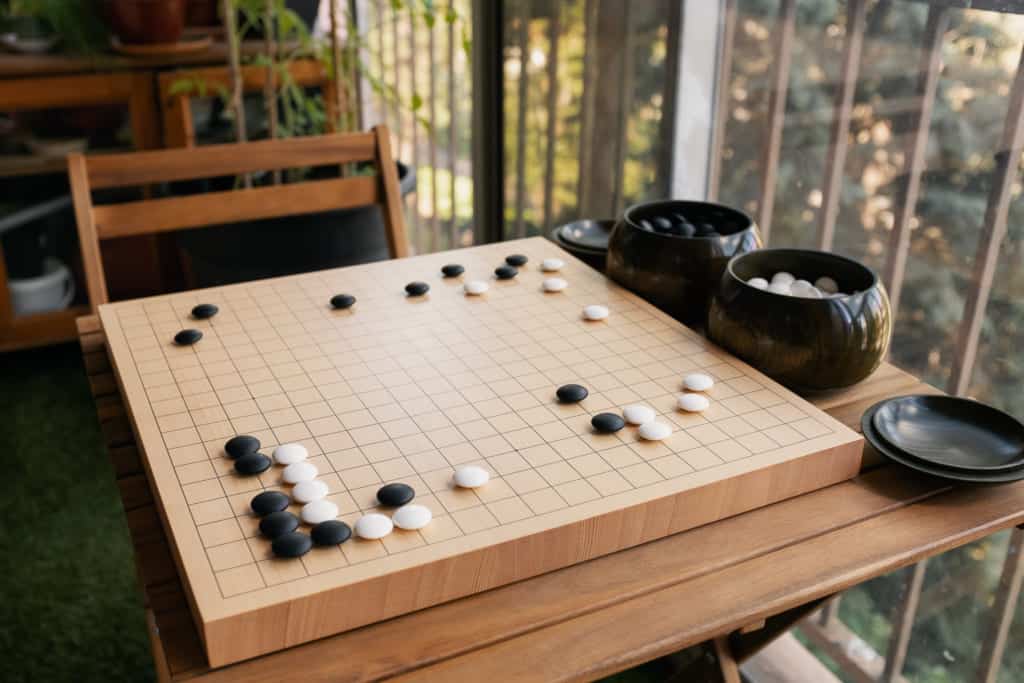
The Go board
The Go board, goban in japanese (碁盤) is a wooden board with a grid of 361 intersections. The traditional Go board matches the traditional Japanese way of life. The goban was not a simple board, but a kind of small table with legs, in front of which players sit on a tatami floor. Nowadays, Japanese craftsmen also make thinner Go boards designed to play the game on a regular table.
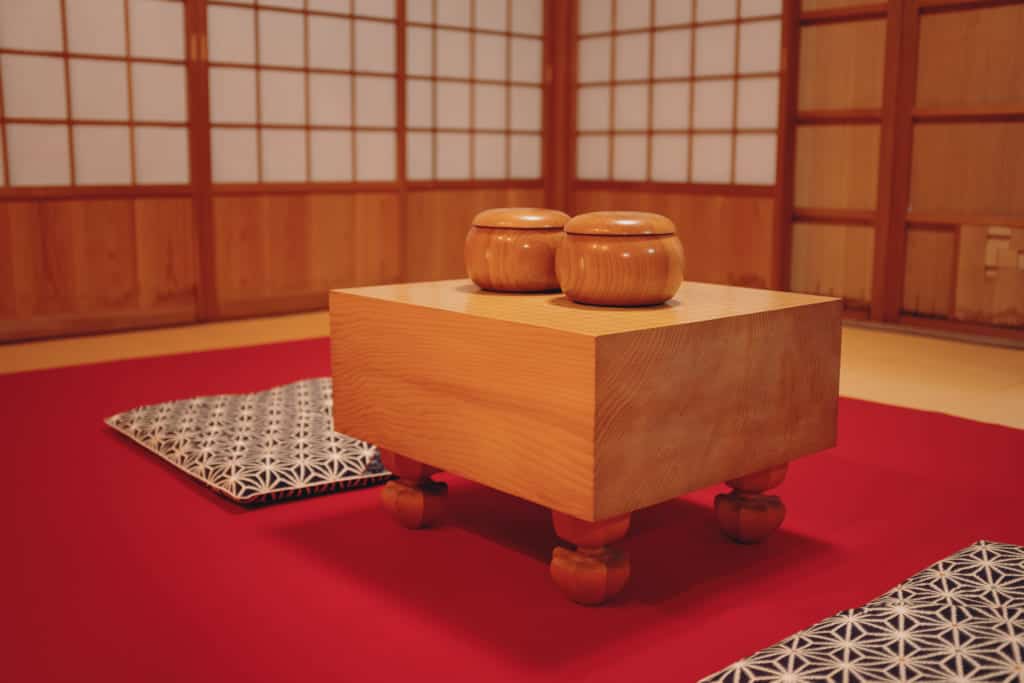
Although it looks like a simple cube of wood, the goban is actually a piece of high precision work. For example, under the board, you will find a small cavity designed to amplify the sound of the stones hitting the Go board.
Approximately 15 to 20 cm thick, the Go board is cut from a single piece of wood. The quality of the goban depends on both the type of wood and the part of the tree it comes from.
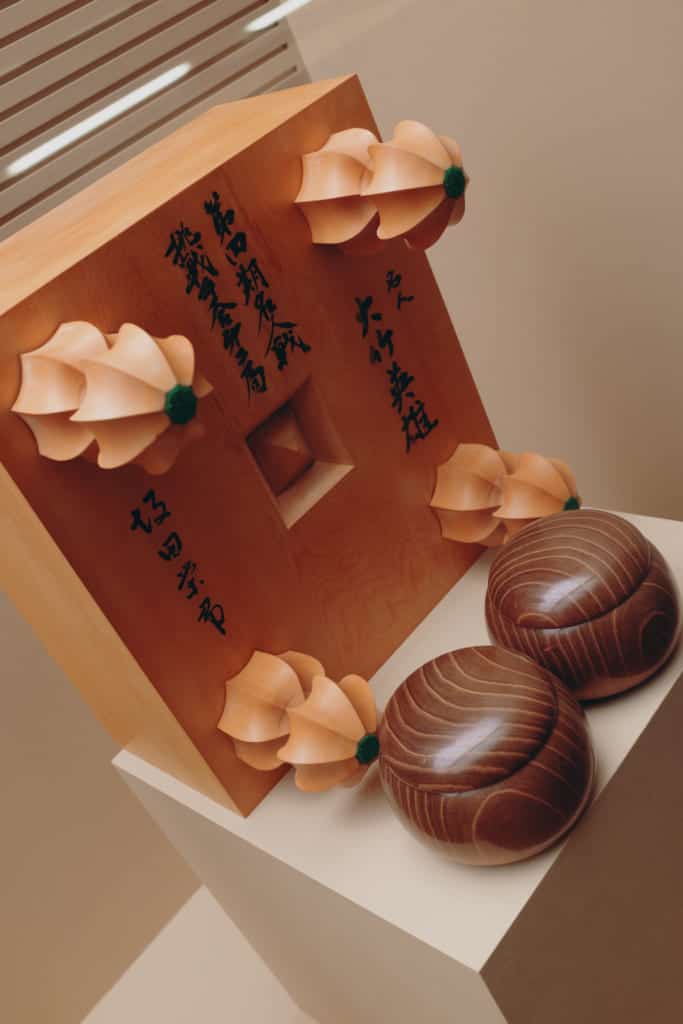
The cutting itself can change the value of a Go board. Ideally, the grain of the wood should be straight and parallel to the lines on the top of the board; therefore the most valuable Go boards are cut as close as possible to the heart of the tree.
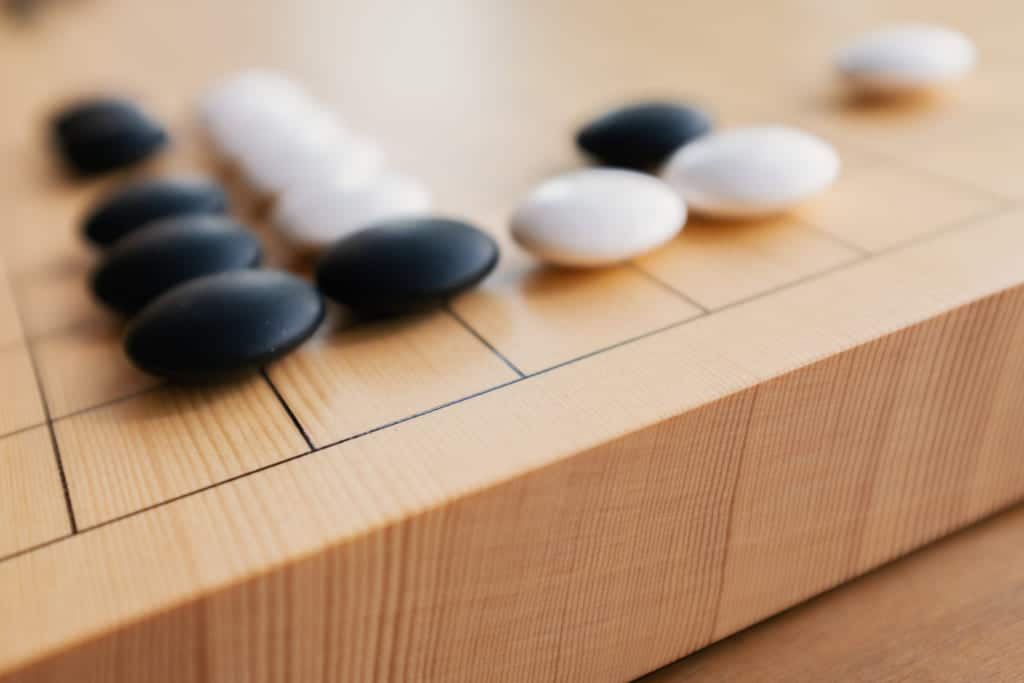
Traditionally, Go boards are made out of kaya, a coniferous tree that grows only in Japan and Korea. Appreciated for both the texture and color of its wood, as well as for the characteristic sound of the stones placed on a kaya Go board, it is also a tree that grows very slowly. The kaya goban are therefore particularly expensive. A Go board made out of kaya wood with an ideal cut can be sold for more than 20,000 dollars!
Of course it is possible to buy much cheaper and still beautiful Go boards. The most popular Go boards are probably ones made out of shin-kaya (literally “new kaya” in Japanese), which is actually spruce, but there are also goban made out of oak, beech, and bamboo.
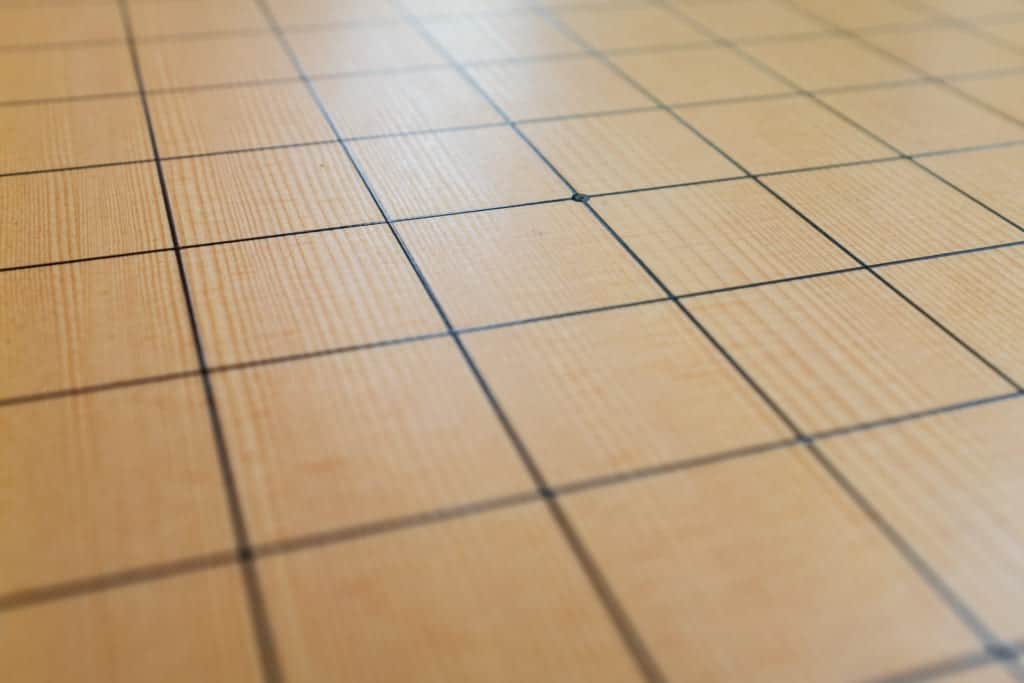
The lines drawn on the Go board follow very specific rules. To be really perfect, the grid is not exactly square. When the players sit in front of the goban, the perspective slightly changes their perception of the grid. Therefore, the grid of a Go board is slightly rectangular, giving the feeling of a perfect square to the players facing the goban.
The lines are drawn with lacquer using a Japanese sword. This technique, called tachi-mori, requires incredible concentration. If the craftsman makes the slightest mistake he must completely sand the Go board and start all over again.
The Go stones
Playing Go requires black and white stones, called goishi (碁石) in Japanese. The stones of a traditional game of Go are made out of slate and shell.
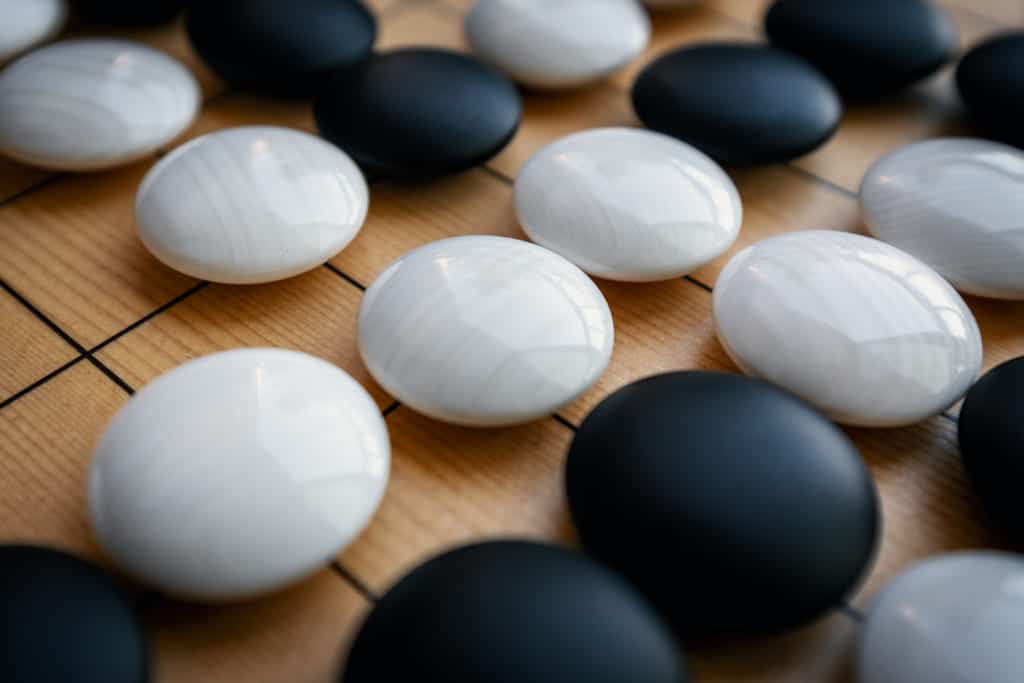
The white stones made out of shell are one of the most valuable pieces of a Go game set. It is real craftwork as each stone is polished by hand. It is a traditional handiwork historically established in Hyuga city, Miyazaki Prefecture, on Kyushu island. The beaches of Hyuga once had plenty of the shells used to make Go stones. Nowadays, the shells come from Mexico but the particular skills of Hyuga’s craftsmen still make it the main place of production of Japanese Go stones.
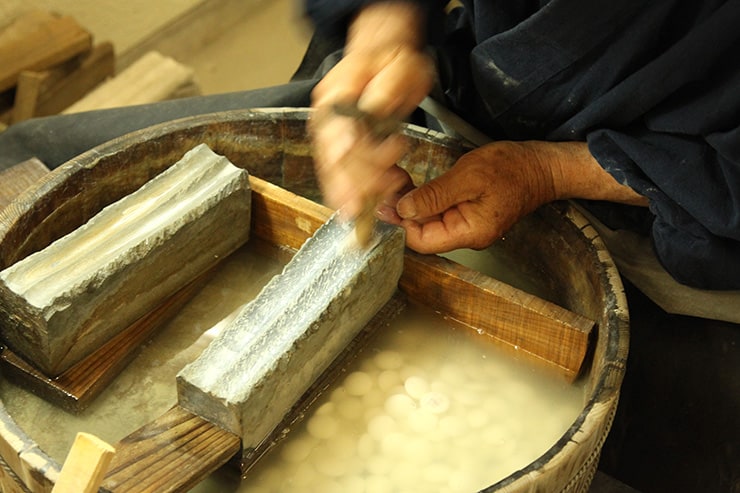
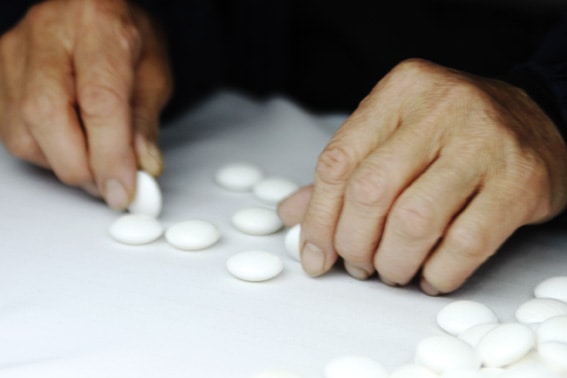
Each stone made out of shell has a specific grain pattern. The stones showcase the beauty of nature in a very simple way, in typical Japanese spirit.
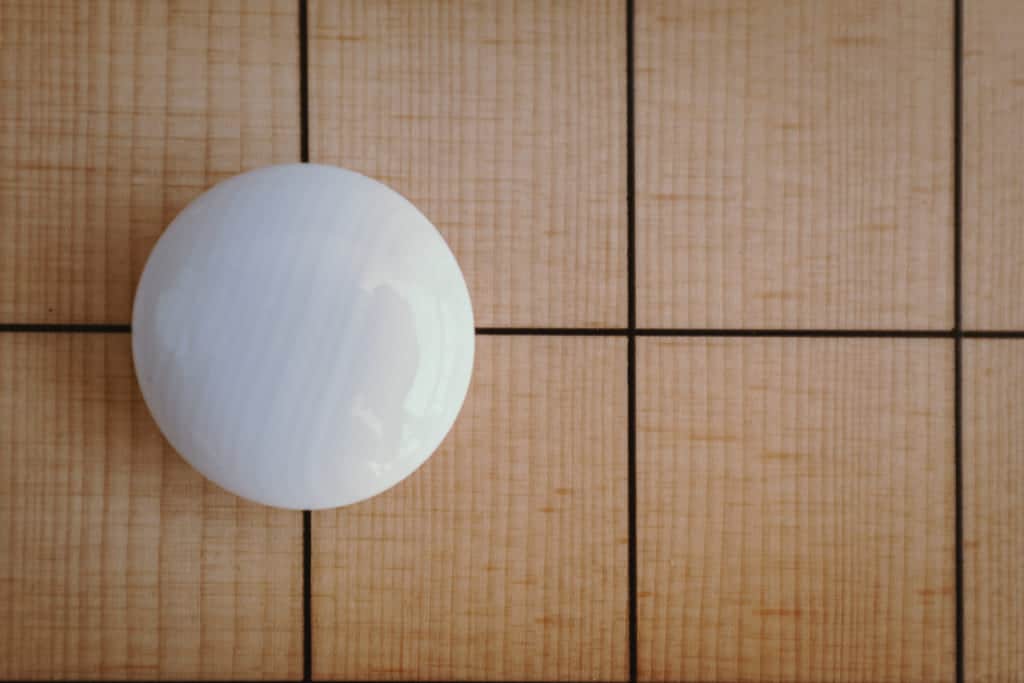
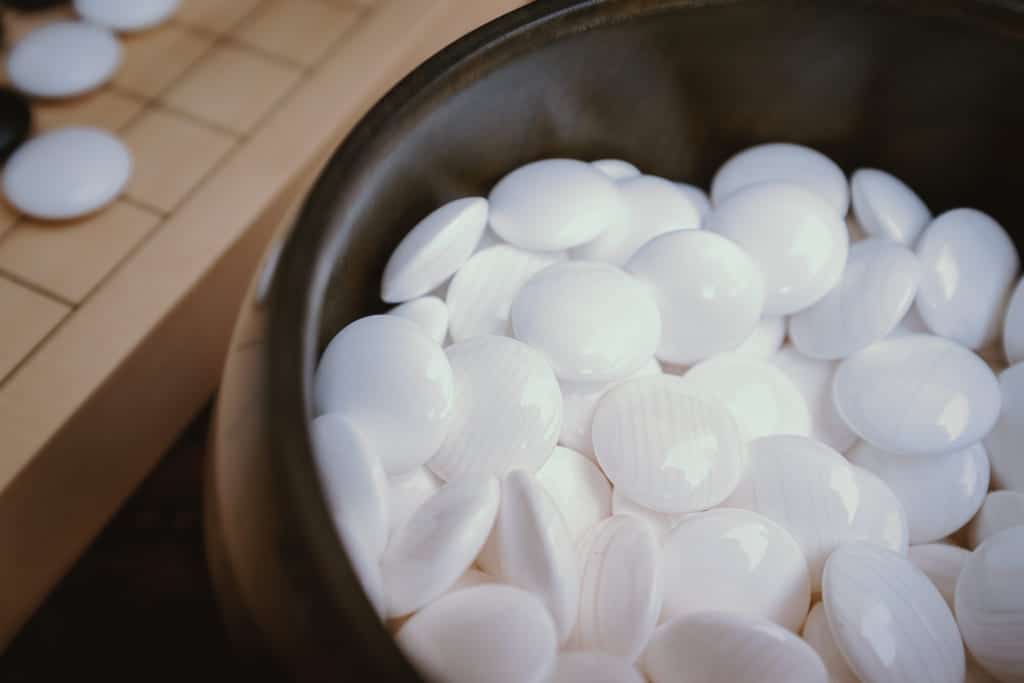
A game of Go consists of 361 stones: 181 black stones and 180 white stones. As each stone is handmade, it requires a considerable amount of work. Stones are sorted in different categories depending on the thickness and the density of stripes. Depending on the quality, a set of stones can command a high price.
The bowls of Go
The bowls are used to store the stones and the lid is used during the game to place the captured stones. The bowls may seem less essential than the Go board or the stones but it is part of the whole aesthetic experience of a game of Go made by Japanese craftsmen.
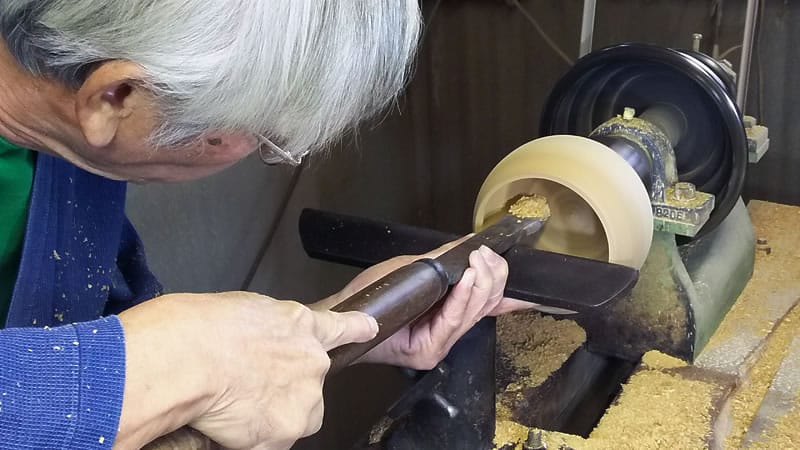
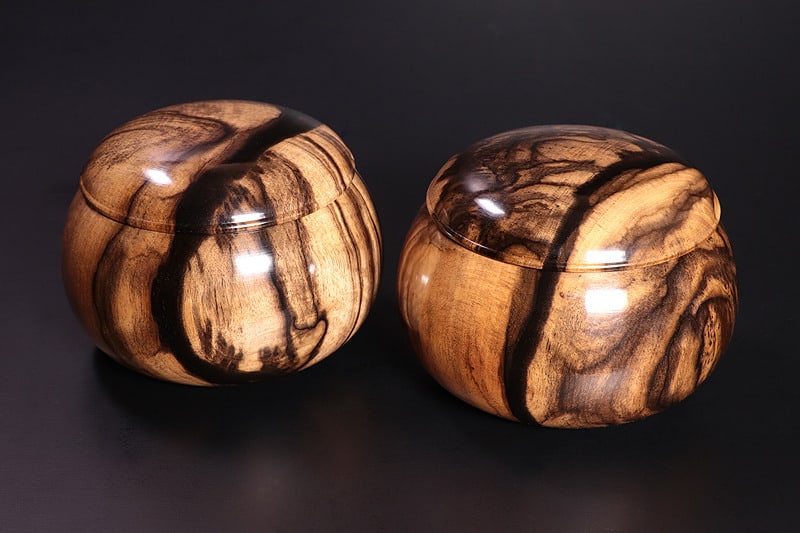
Many types of wood are used to make the bowls. Each bowl is made by hand out of a single piece of wood, making each bowl unique with its very own pattern.
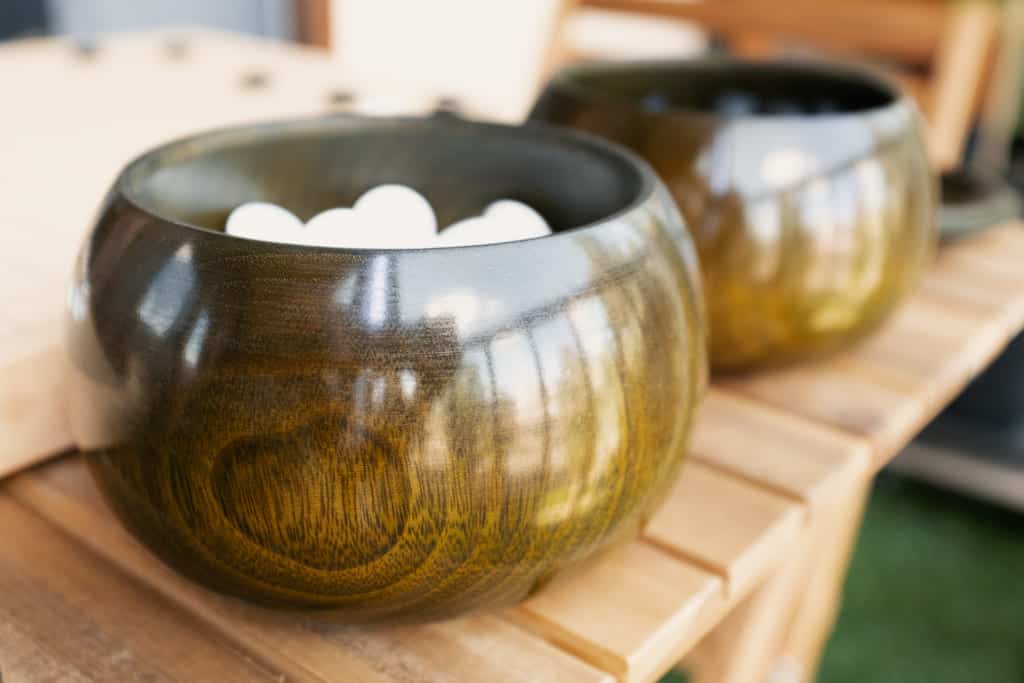
The high-end bowls are made of mulberry wood from Mikura-jima, a very small island south of Tokyo, or from black persimmon wood (黒柿) that give the bowls very unique and contrasty patterns.
Where to play Go in Japan
If you already know how to play Go and have planned a trip to Japan, it is a great opportunity to play against Japanese players. You will need to find a Go salon, indicated by this Japanese name: 囲碁サロン. There are numerous salons in every big city, but they can be quite hidden and difficult to find. You can find some locations on the Internet depending on the city you are visiting. If you stay in Tokyo during your trip you can simply go to one of the Go salons I present in this article. But even if it takes some time for you to find a Go salon, you can be sure that your efforts will be rewarded. Japanese players don’t often meet foreign Go players and you should have plenty of curious opponents happy to play a game with you.
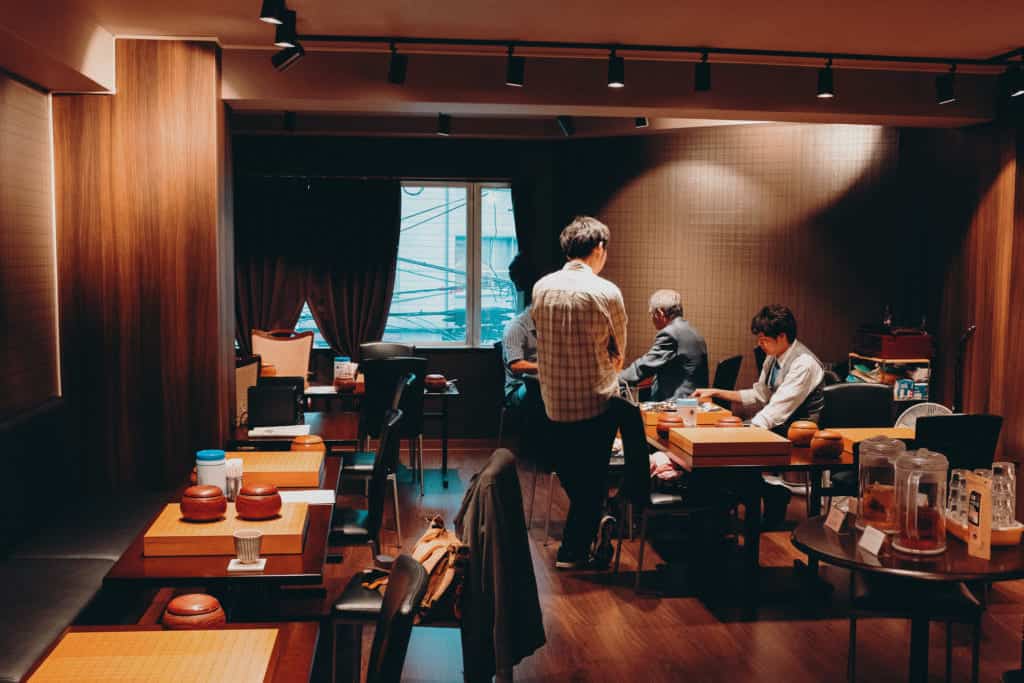
When you arrive in a Go salon, you will have to pay an entry fee that often depends on the length of time you will stay in the salon, from a few hours to the whole day. The staff will assign you an opponent depending on your level. The fees sometimes include free soft drinks.
I have been to several Go salons where the staff could only speak Japanese. If you don’t speak Japanese at all, it can be a little bit difficult to find a Go salon where you can play easily, but here are three Go salons in Tokyo where you won’t have to worry about the language.
The Go salon of Sunshine City in Ikebukuro
Note: As of March 2021, this venue is permanently closed
In Ikebukuro (池袋), on the 9th floor of the huge department store Sunshine City, this Go salon is quite new. Open from 12 a.m to 9 p.m. during the week and from 12 a.m to 8 p.m on Sunday, the entry fees are 1,400 yen for two hours and 1,600 yen for the day. But it seems that this salon tries to attract foreigners as you will only have to pay half price as a foreigner! You should be aware that Wednesday is an exclusive day for women, but as a foreigner, you will be able to play even if you are a man.
It is a very nice Go salon where I played several times. You will mostly find elderly players, but some students also come sometimes, especially on Friday afternoons.
Café and Go Hidamari
Café and Go Hidamari is not only a Go salon but also a café where you can come to drink something even if you don’t play Go at all. Hidamari was once a simple coffee shop, but when Mayu-san inherited the place in 2017, she decided to turn it into a Go salon. The owner of the Café and Go Hidamari can speak English, therefore this place is very welcoming for foreigners and you will find players of all ages.
Unfortunately, I haven’t had the chance to go to this salon, but I heard good things about this place, including from a reader to whom I recommended this café and who had a wonderful time there.
The Café and Go Hidamari is open from 1.30 p.m. to 8 p.m. on Tuesdays, Saturdays, and Sundays, and from 1 p.m. to 11 p.m. on Wednesdays, Thursdays and Fridays. Closed on Mondays. The Friday of the third week of each month, the Go salon closes at 5 p.m.
The Go salon fees are 1,500 yen, but of course, only the people playing Go have to pay it.
The Nihon Ki-in
The Nihon Ki-in (日本棋院) also known as the Japan Go Association, is the beating heart of Japanese Go. That is the place where professional Go players play most of their games and where young players study Go in order to become professionals.
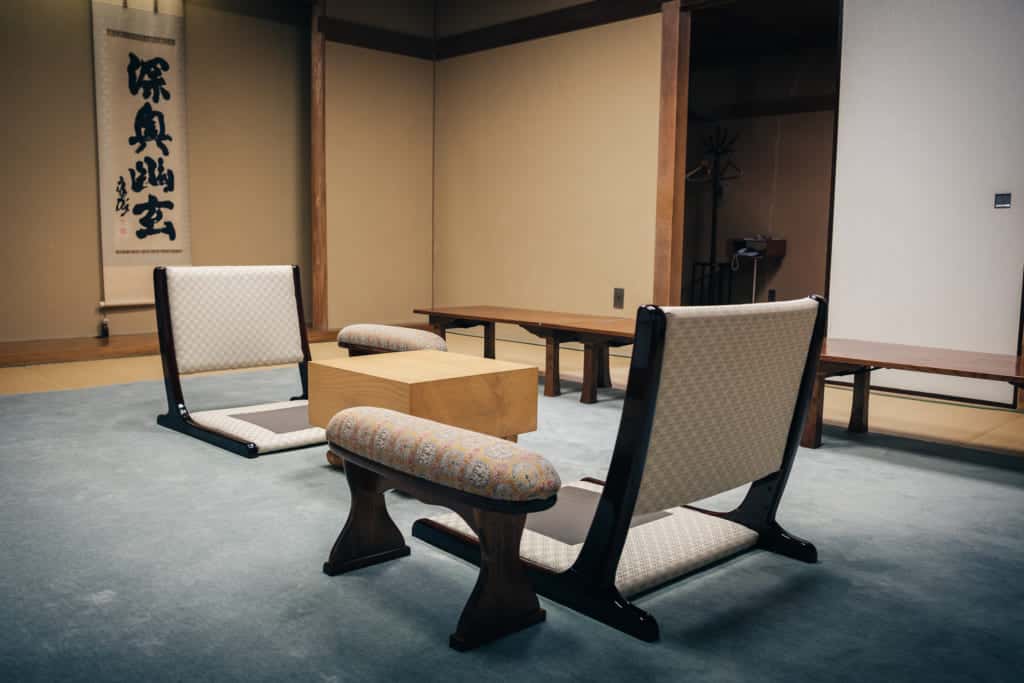
In the basement, a small museum traces the history of the game of Go, and you will find Go games and plenty of Go related books or souvenirs in the small shop of the building. But the Nihon Ki-in also hosts a Go salon where you will be able to play games.
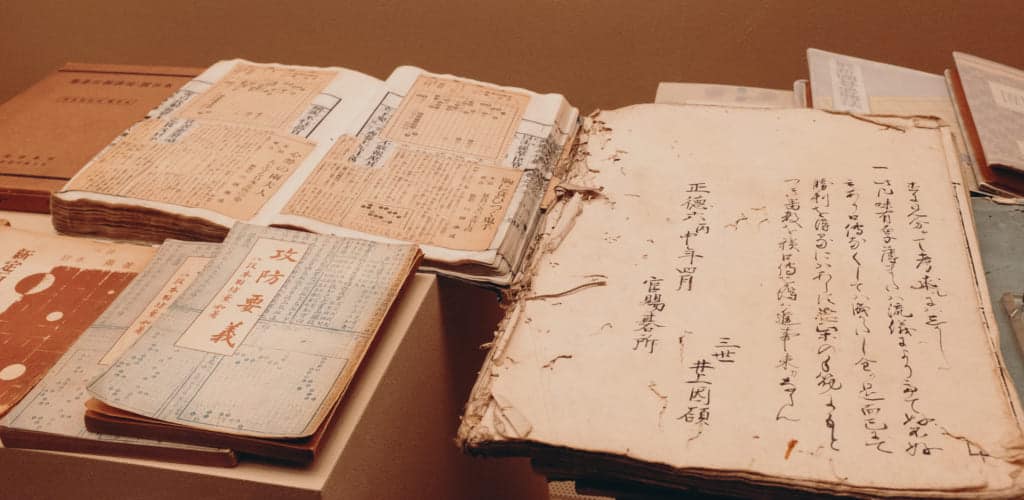
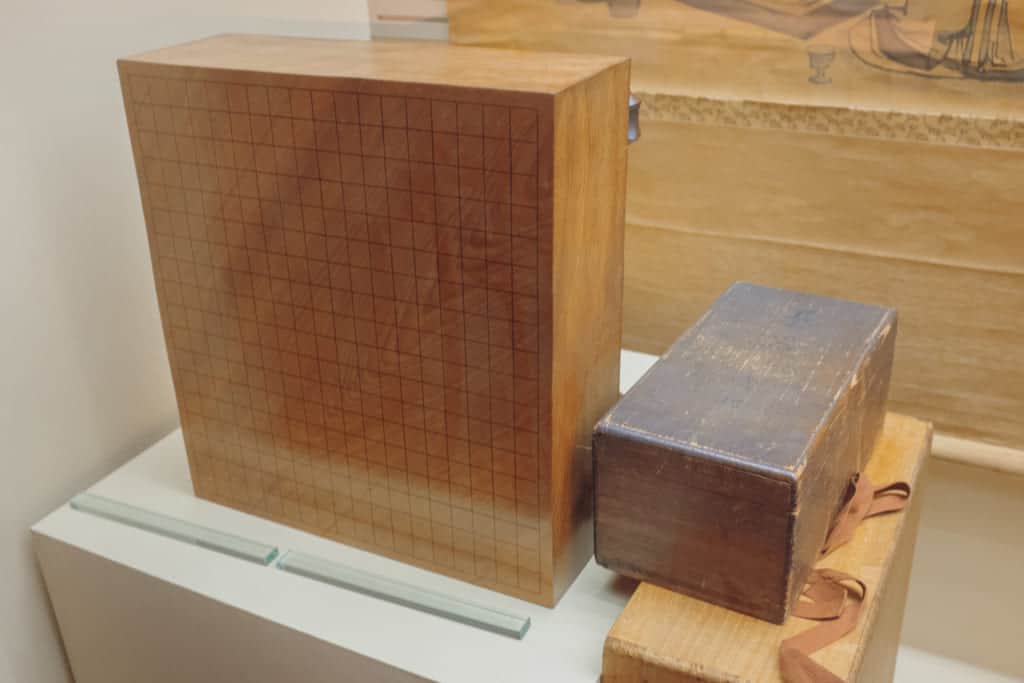
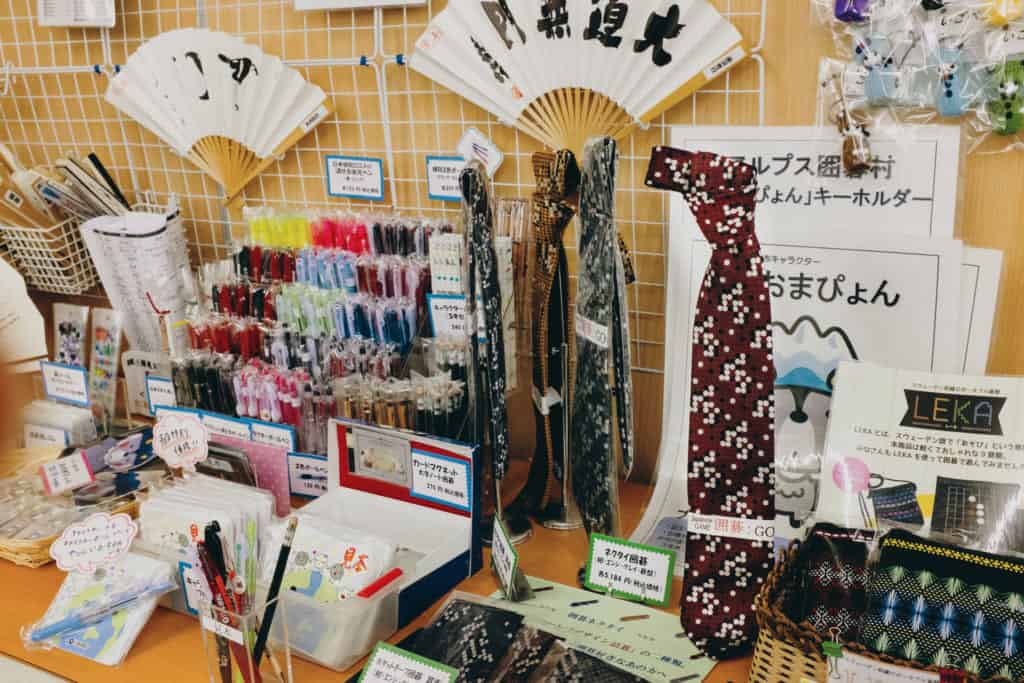
Open every day from 11 a.m. to 6 p.m. (and until 8 p.m. on Thursdays), you will pay 1,500 yen fees for the day. You pay half price if you arrive after 4 p.m.
Every year, the Nihon Ki-in hosts a Go summer camp, in English and exclusively for foreigners. It is a wonderful dive into the world of Japanese Go for every Go enthusiast around the world.
The Nihon Ki-in Summer Go Camp
I have been lucky enough to take part in the Nihon Ki-in Summer Go Camp in 2018. It was the fulfillment of a wonderful dream for the Go player that I am. During the two weeks, famous professional Go players gave us lessons every day. It was a unique opportunity to meet players like Takemiya Masaki or Michael Redmond, professional players known by every Go player in the world.
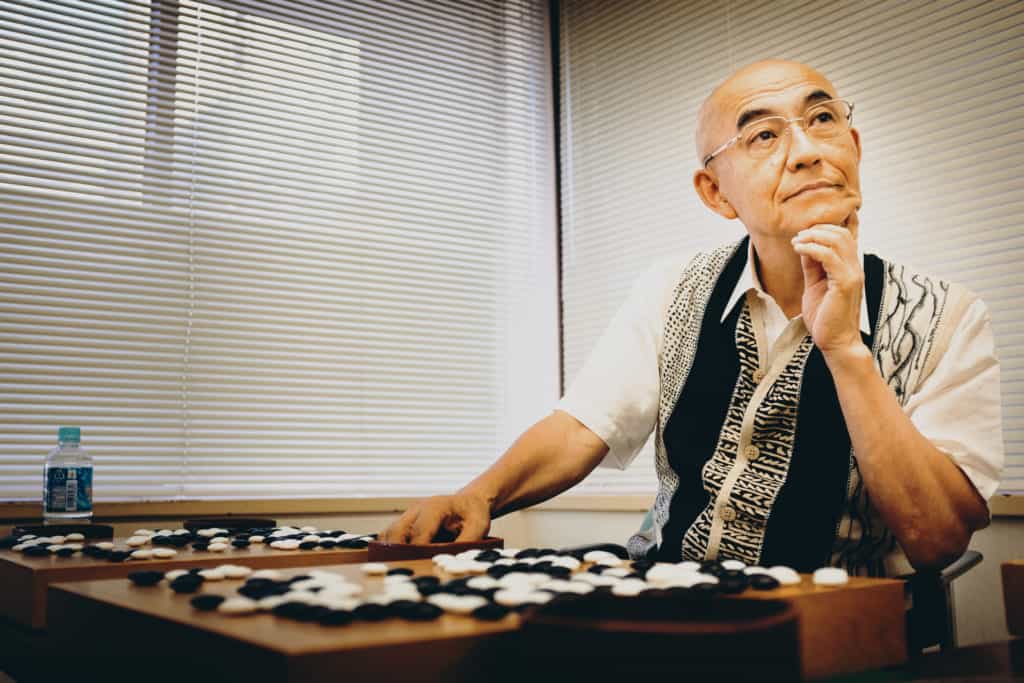
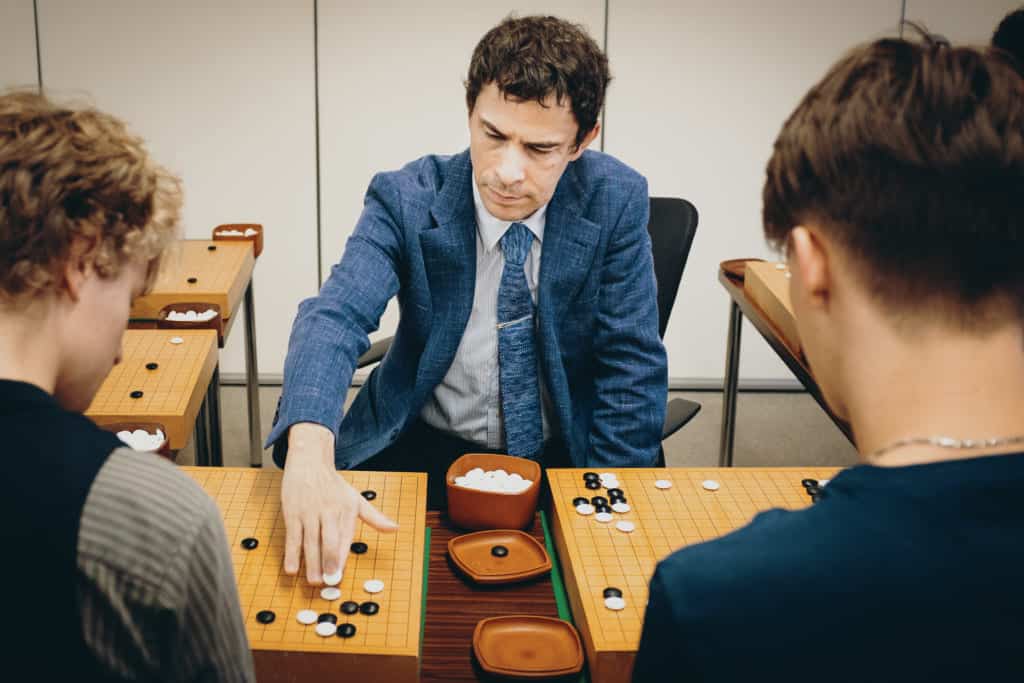
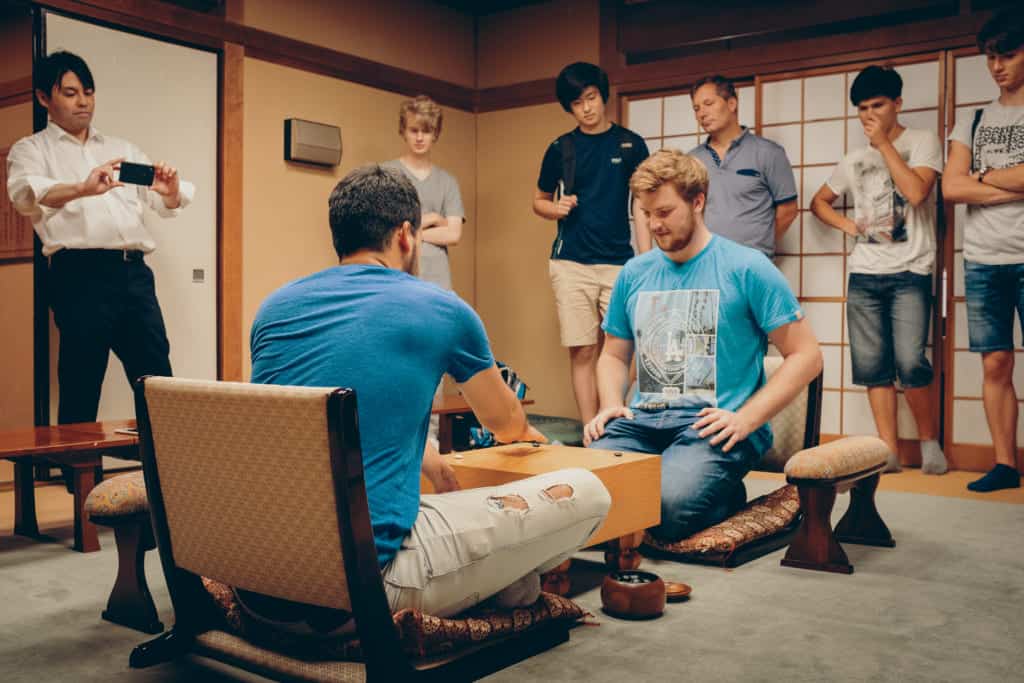
Not only could I play Go every day and learn to master a little bit more of the infinite complexities of this game, but it was also a true pleasure to simply be at the Nihon Ki-in, a historical and legendary place for Japanese Go.
One of the highlights of this summer camp was to attend the first game of the Meijin, one of the most prestigious titles in Japan. A rare chance to discover profesional Go world from the inside.
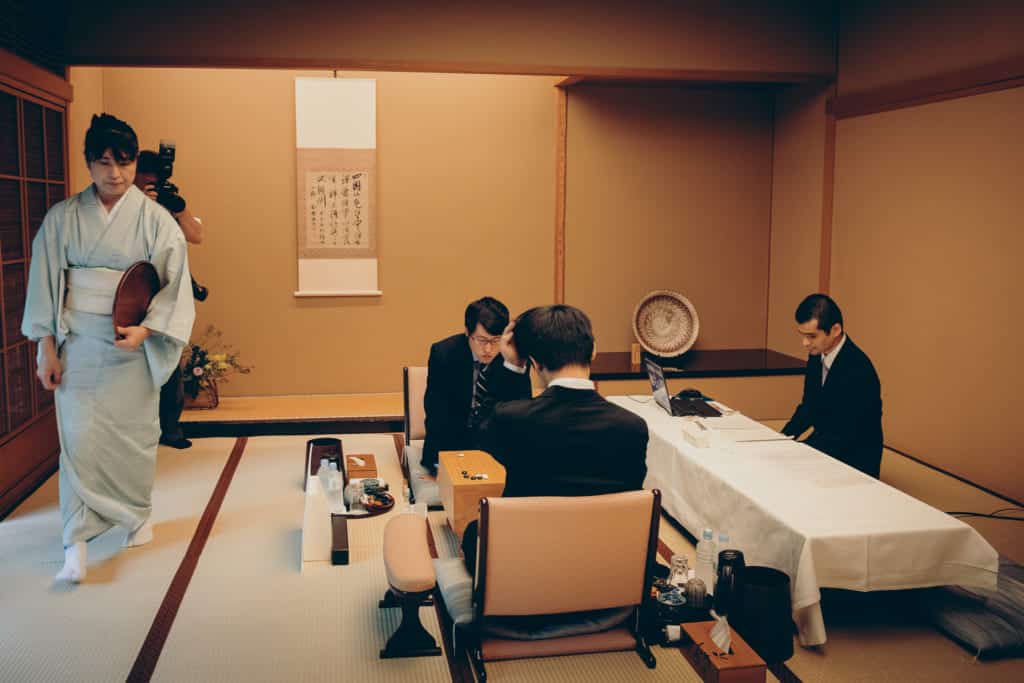
On the last day of the summer camp, we participated in the Takara Shuzo Cup, a big amateur tournament that takes place every year. It was the perfect moment to put into practice everything we learned during the summer camp with the exciting experience of a real tournament.
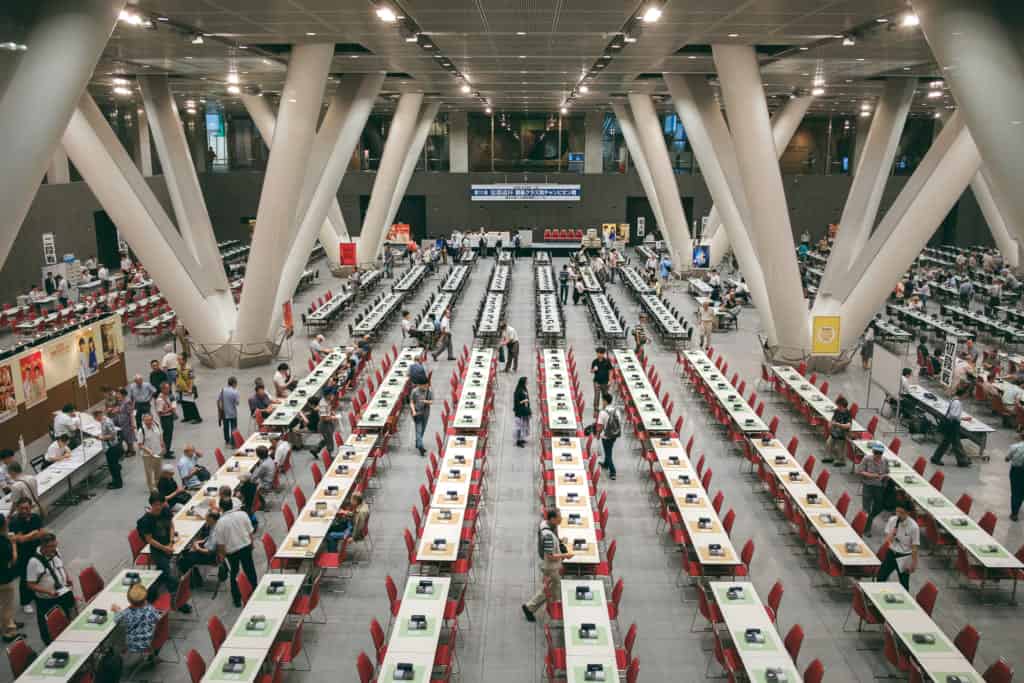
The Nihon Ki-in Summer Go Camp is one of the most intense experiences I had in Japan. I highly recommend it to every passionate Go player. In the end, you will have only one desire: come back to the next summer camp! You can find information about this year’s edition on the Nihon Ki-in Facebook page.
The Honinbo Shusaku Museum at Innoshima
Honinbo Shusaku is one of the most famous Japanese Go players. He is known to be the best player of the 19th century and inspired the character of Sai, the ghost who haunts the main character of the manga “Hikaru no Go.”
Despite the continuous evolution of Go, the games played by Shusaku are still studied today. Born on the small island of Innoshima, Hiroshima Prefecture (広島県), it is also where he was buried after his premature death at the age of 33.
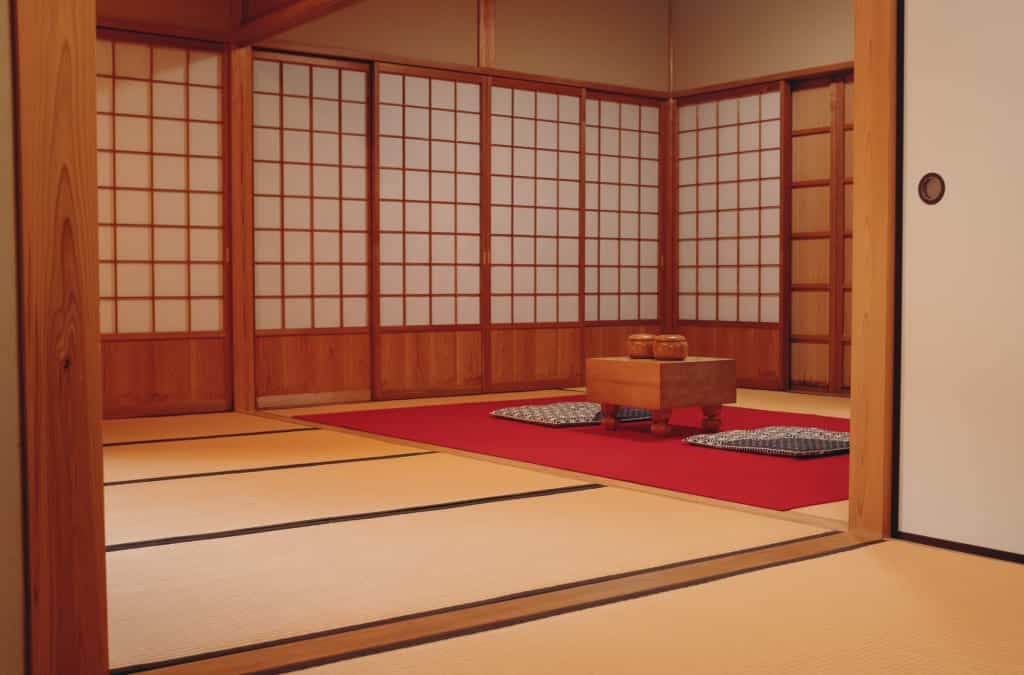
The Honinbo Shusaku Museum was built in Innoshima in memory of this legendary player. It is a quite small museum but very pleasant to visit. Numerous objects owned by Shusaku are displayed, including the Go board on which he learned the game of Go. A little further, his childhood home has been faithfully recreated.
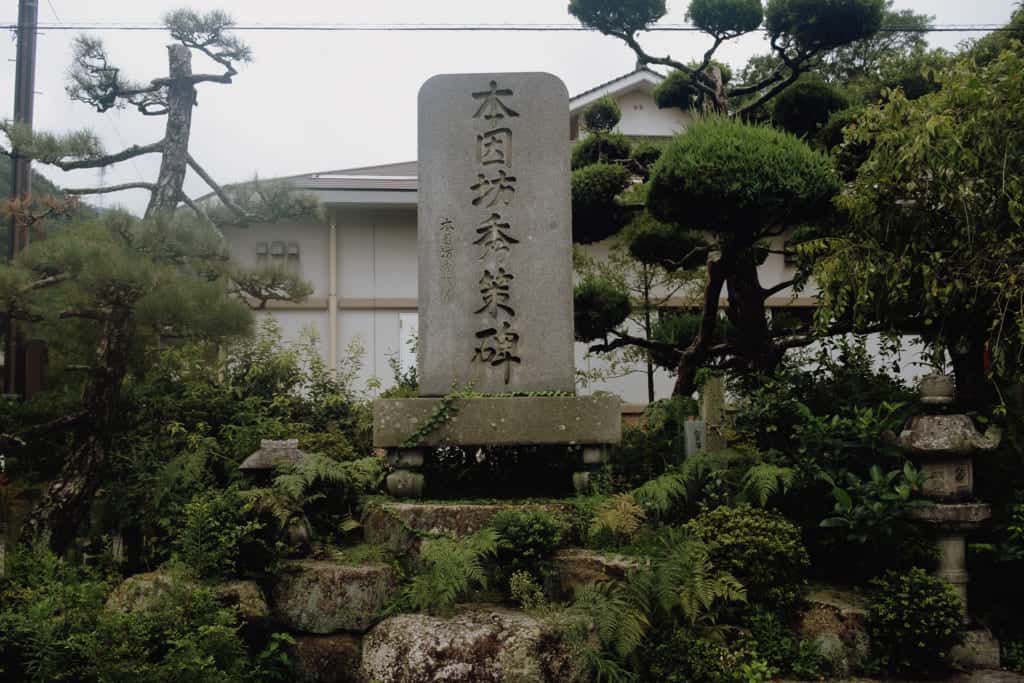
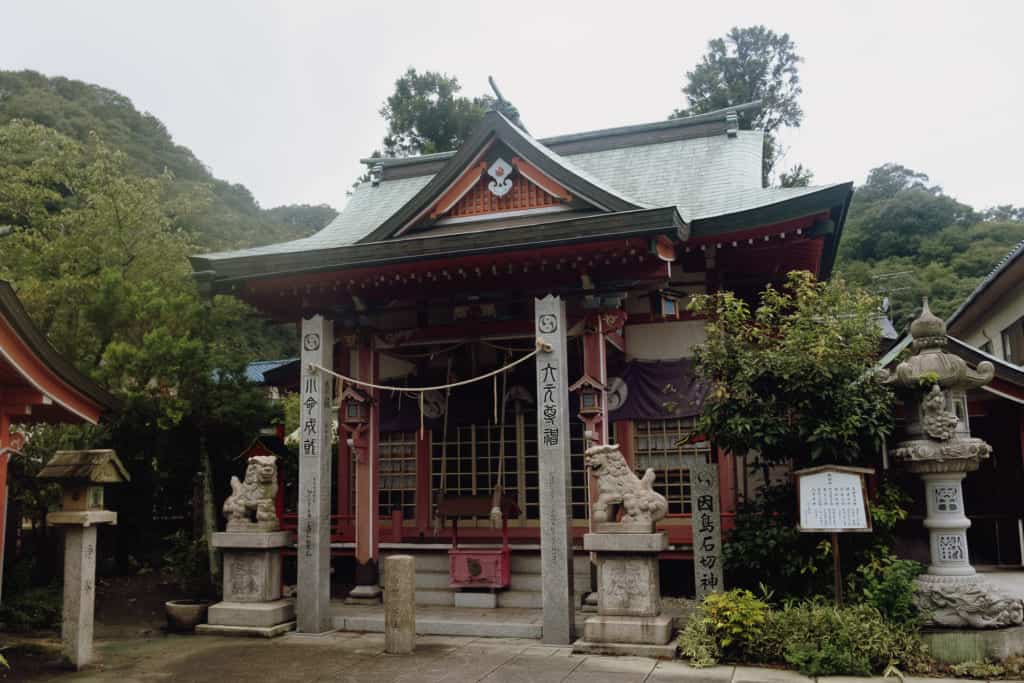
Shusaku’s grave can be found behind the museum. It has been turned into a small shrine where players come to pray to become stronger at the game.
The museum is open from 10 a.m. to 5 p.m. everyday except on Tuesdays (except open on Tuesdays if it is a holiday, in which case the museum will be closed the next day. You can find the exact opening days on the schedule of the museum’s website).
A visit to the Honinbo Shusaku Museum is also a very good occasion to enjoy the beautiful Onomichi island, on the path of the Shimanami Kaido, a long cycling path connecting Honshu island to Shikoku Island through numerous small islands. It requires some efforts to climb to the top of the bridges going from island to island, but the view is so wonderful that it is definitely worth it.

From samurai who learned Go to master military strategy to Japanese craftsmen who use their skills to refine the beauty of the game, the Japanese culture and the game of Go influence each other. Any Go player who wants to visit Japan to learn more about the game will come back home with black and white sparkles dancing in his eyes.
Learning how to play Go
If you want to learn more about the game of Go and its rules, you can find all the information you need on the American Go Association website or on the European Go Federation website. Although Go is less popular in America or Europe than it is in Asia, there are clubs everywhere around the world and you will probably find a club near you.
It is also possible to play online through websites like KGS or OGS.
Buying a Japanese Go game
Finding a Go game is not difficult. But if you want to buy a traditional Go board with slate and shell stones the best choice is often to buy it directly from Japanese shops.
Kurokigoishiten is probably the best known Japanese Go shop among foreigners. With more than 100 years of history, this company’s products are always of the first quality. Based in Hyuga, the craftsmen of Kurokigoishiten create high-end stones, Go boards, and bowls, which forged them a solid reputation. They have an English website and ship their products worldwide.
Aoyama gobanten can also ship their products anywhere in the world. Unlike Kurokigoishiten, Aoyama Gobanten is a simple shop and doesn’t craft their own products. But they have top quality Go boards and their stones are made by Kurokigoishiten craftsmen. If you are in Tokyo, you can take the time to visit their shop. The owner is always happy to talk with Go enthusiasts from abroad!


